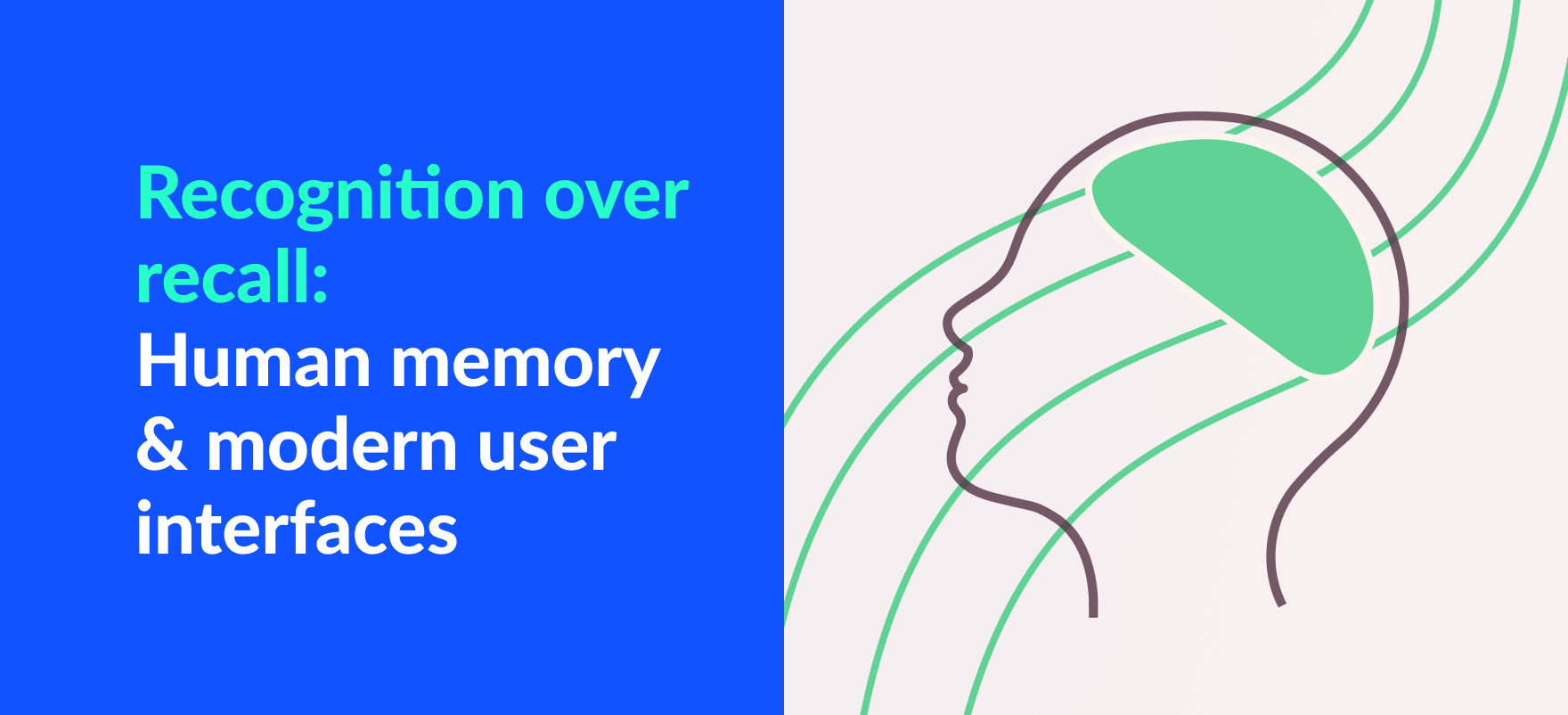When designing a digital product, as designers, our goal is to make the interface as simple as possible. The outcome should be an easy-to-understand experience with a memorable flow. The more familiar people are with our interface, the more they are invested in our product.
In this article, we will explore how people organize information in their brains to help them memorize. Let’s do a small exercise first that will help us better understand how we memorize. Here is a list of 12 items I want you to remember. Just quickly go through the list and try memorizing as much as possible. We will come back to this later.
| Dog | Porcupine | Eagle | Cat |
| Sardine | Mantis | The Great White | Kangaroo |
| Wolverine | Badger | Bear | Tiger |
Difference between Recall and Recognition
Recognition and recall are both techniques that help us memorize.
Recall memory is how we retrieve information from our brain through learning and practice.
For example, most of us prepare for our examination by practicing and studying the contents. We now recall this information during the exam session.
Recognition memory is how we retrieve information from our brain through previous knowledge and experiences.
Recognition memory is a way of remembering what the content was in relation to the context.
Let’s assume our mall shopping visit got a bit unfortunate as we forgot our shopping list at home. We tend to recall items on the list by using the context. For example, we want to at least do our groceries. Our purchase of the items will be based on what items our brain slots into the grocery category.
Recall vs Recognition in Action
Let‘s continue with the previous exercise. This will help us better understand both recall and recognition memory. Can you write down all 12 items depending only on your memory power?
If you did write down all the 12 items, then you just did a recall task.
Now in a different scenario, I could have asked to list me down all the items verbally without any prior effort. For this scenario, you would have just performed a recognition task.
Now take a look at the list you have written. You probably listed names that are related to animals. Now compare your list to the original list. You might not remember every single one of them on the list but you recognize them as animals.
See how recognizing things is an easier way to memorize than recalling. Also, recognition memory is retained longer than recall memory.
Song Playlist Example
We tend to recognize the songs from our playlist whenever it is played outside of our usual medium. We can’t remember our entire list but we do mentally map out the songs we have in our playlist.
Recalling is when you try to remember what songs you have solely on memory. This requires a lot of practice and learning. Recognizing songs and realizing you have them on your playlist is way easier.
We tend to expect a certain song to play next after a song from your playlist has played based on our memory of playing the same playlist over and over again. This is known as memorizing through repetition.
Some Recognition Memory Examples in UX
We can chunk information into groups so that people can recognize the chunking pattern. Chunking is a technique that helps the user process and understands large information by breaking them into smaller chunks.
People are used to remembering 10 digit phone numbers by chunking them into pieces. See below how we divide the numbers so that it is easy to remember.

I would highly suggest exploring more examples in my Chunking Psychology article to better understand how we can use it to create simpler and cleaner interfaces.
When designing UIs, we should also keep the proximity principle in mind. Basically, this principle states that objects or elements that are placed together are perceived to be more related than the ones far apart.
Keeping navigation items together and grouping all setting options together in a single menu are some examples of this. This is the basic concept of helping users memorize content based on context.

I would also suggest going in more depth on this topic through my Proximity principle article.
Takeaways
- Recognition memory helps users remember by experience while recall memory focuses on learning and practice.
- Recognition memory is retained for longer periods and is easier to remember.
- Designs should assist users to use recognition memory over recall memory.
